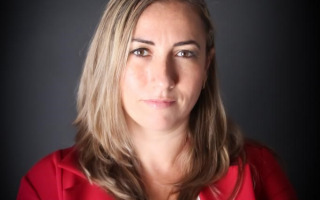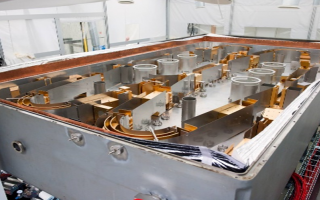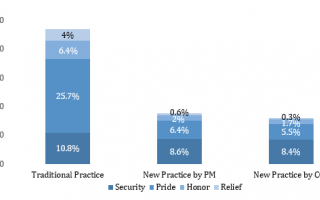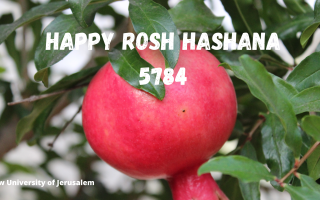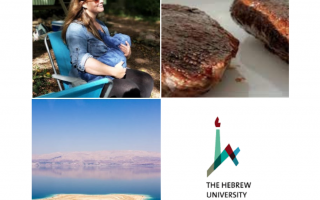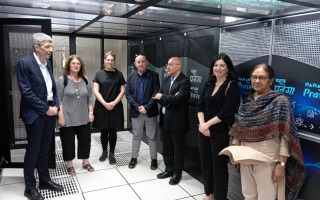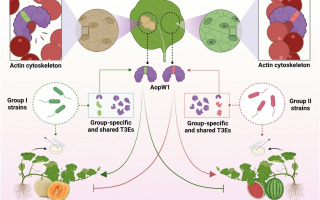News
Prestigious 2024 Brain Prize Awarded to Hebrew University's Prof. Haim Sompolinsky by Lundbeck Foundation
Prof. Haim Sompolinsky of the Hebrew University and Harvard University has been awarded the Brain Prize for 2024, the largest and most prestigious international prize in neuroscience.
Intel Ignite Tel Aviv Partners with Hebrew University Startup 'Rumafeed' for Innovative Agricultural Project in Holit
Hebrew University is thrilled to announce that "Rumafeed," a startup associated with Hebrew University and Yissum, led by Prof. Haim Rabinowitch, has been chosen by Intel Ignite Tel Aviv to partner with Holit on a Proof of Concept (POC). Their project has achieved a remarkable transformation of potato leaves, turning what is currently considered biological waste into a valuable product – animal fodder and silage with excellent digestibility compared to traditional fodder, along with excellent nutritional value.
Navigating Israeli Security and Foreign Policy: Before and After October 7th
How Changes in Foreign Policy Impact Citizens' Sense of Security in Israel
New study explores the connection between a state's foreign and security policy and citizens' sense of ontological security (OS). Using a survey experiment with Jewish Israeli citizens, the research operationalizes OS as a function of foreign policy, specifically examining the impact of a shift in traditional Israeli foreign policy from offensive-preemptive to a more cooperative strategy. Results indicate that those exposed to the newer policy, prevalent in the past two decades, experienced decreased levels of security. The findings also touch on issues of secrecy, highlighting the unanticipated costs of public intelligence disclosure and the balance between democratic accountability and the need for secrecy in decision-making.
The study explores the connection between a state's foreign and security policy and citizens' sense of ontological security (OS), defined as a sense of certainty and continuity of national identity. Using a survey experiment with Jewish Israeli citizens, the research operationalizes OS as a function of foreign policy, specifically examining the impact of a shift in traditional Israeli foreign policy from offensive-preemptive to a more cooperative strategy. Results indicate that those exposed to the newer policy, prevalent in the past two decades, experienced decreased levels of security (a significant difference of 20 percentage points). The findings also touch on issues of secrecy, highlighting the unanticipated costs of public intelligence disclosure and the balance between democratic accountability and the need for secrecy in decision-making. The study concludes by emphasizing the importance of decision-makers being aware of the cognitive tools needed for the public to make sense of foreign policy shifts.
A new study conducted by the Hebrew University sheds light on the intricate dynamics between foreign policy and the sense of security among individual citizens, with a specific focus on Jewish-Israeli citizens.
Dr. Ofek Riemer, from the Department of International Relations at the Hebrew University, spearheaded the research, examining the impact of deviations from established foreign policy practices on citizens' feelings of national identity and security. The investigation focused on the potential ramifications of Israel's recent shift towards a more defensive approach, departing from its traditional strategy of preemptive strikes and preventive wars.
This study is particularly timely, given the unexpected attack on Israel by Hamas on October 7, 2023, with ongoing hostilities in the Gaza Strip. The attack revealed a strategic failure and has instilled a sense of humiliation and insecurity among the Israeli population. Widespread feelings of uncertainty, frustration, anger, and fear have been documented, indicating the potential solidification of traditional beliefs among Jewish-Israelis regarding their country's strategic environment.
Jewish-Israelis were chosen as the primary focus for the study due to the deep connection between Jewish history, Israel's security ethos and concerns about Jewish safety, rooted in the experiences of the Holocaust and encapsulated in the "Ben-Gurion" security values and beliefs since the State's establishment in 1948.
The research builds on ontological security studies, gaining prominence in International Relations over the past two decades. The study, led by Dr. Riemer, specifically explores how foreign policy behavior affects individual citizens' sense of ontological security, which is a sense of certainty and continuity of national identity.
Dr. Riemer explains, "This study seeks to provide empirical support for the premise that individual citizens become attached to their state's foreign policy practices, and deviations from these practices can impair their sense of ontological security. The results highlight the importance of understanding the intricate link between foreign policy and citizens' sense of security in shaping national identity."
Dr. Riemer's experimental approach involved presenting participants with hypothetical scenarios reflecting Israel's traditional and new foreign policy approaches. The results indicate that exposure to the new defensive-oriented policy generated significantly less support and feelings of pride among participants, suggesting a potential impact on citizens' sense of national identity and security.
Figure 1. Experiment Outline
Figure 2. Positive Emotions Linked to Foreign Policy Practices: More than double with regard to the traditional approach compared to the new approach
Figure 3. Negative Emotions Linked to Foreign Policy Practices: Three times more with regard to the new approach compared to the traditional approach
It is interesting to note that age was the only variable significantly interacting with ontological security concerning foreign policy change. Older individuals showed higher ontological security levels correlated with traditional foreign policy behavior. This suggests that social and cultural shifts may influence younger generations' attitudes toward foreign policy, although the impact hasn't completely reversed.
Figure 4. Foreign Policy Practices' Impact on Ontological Security by Age
The study not only illuminates the intricate relationship between foreign policy and ontological security but also underscores the importance of considering citizens' sense of security in shaping effective foreign policy strategies.
Survey Methodology
The survey was prepared by Dr. Ofek Riemer at the Hebrew University of Jerusalem. The survey was conducted by iPanel via the internet between February 28 and March 2, 2021with 600 Jewish Israeli men and women in Hebrew, consisting of a nationally representative sample of the adult Jewish population in Israel aged 18 and over.
The research paper titled “Foreign policy and citizens’ ontological security: An experimental approach” is now available in Political Studies and can be accessed at https://doi.org/10.1177/13691481231218864
Researchers:
Ofek Riemer1
Institutions:
1) Department of International Relations, Faculty of Social Sciences, Hebrew University of Jerusalem
The Hebrew University of Jerusalem is Israel’s premier academic and research institution. With over 25,000 students from 90 countries, it is a hub for advancing scientific knowledge and holds a significant role in Israel’s civilian scientific research output, accounting for nearly 40% of it and has registered over 11,000 patents. The university’s faculty and alumni have earned eight Nobel Prizes and a Fields Medal, underscoring their contributions to ground-breaking discoveries. In the global arena, the Hebrew University ranks 86th according to the Shanghai Ranking. To learn more about the university’s academic programs, research initiatives, and achievements, visit the official website at http://new.huji.ac.il/en
Unveiling Hebrew University’s Top 7 Discoveries of 2023
In a year overshadowed by national and regional conflicts, The Hebrew University of Jerusalem stands out with exceptional research contributions. Amid the enduring spirit of Israeli academia and technology, our researchers consistently achieve groundbreaking discoveries that bring hope and progress. In this article, we proudly showcase seven standout findings, emphasizing the positive impact of our researchers’ dedication to advancing knowledge.
1: World's First Saliva-Based Pregnancy Test
Deepening Academic Ties in India
Hebrew University's delegation visits the Indian Institute of Science, Bangalore. From left to right: Prof. Oron Shagrir, Prof. Michal Goldberg, Naomi Shalom, Prof. Saul Burdman, and Prof. Shlomo Magdassi from Hebrew University; Limor Bettler, Israel Consulate in Bangalore and Chief Research Scientist Lakshmi J., the Indian Institute of Science.
Breakthrough in Single-Photon Integration
A recent study from Hebrew University has achieved a significant advancement in integrating single-photon sources onto tiny chips at room temperature, representing an important step forward in quantum photonics with potential for applications such as quantum computing and cryptography. This achievement signifies a milestone in the development of practical quantum photonic devices, heralding a promising future where quantum technologies, encompassing computing, communication, and sensing, can be fully realized.
Predicting Chaotic Outcomes in Three-Body Systems
A new study by the Hebrew University has unveiled a significant advancement in chaos theory, introducing a flux-based statistical theory that predicts chaotic outcomes in non-hierarchical three-body systems. This breakthrough holds practical implications for fields such as celestial mechanics, astrophysics, and molecular dynamics, offering a more efficient and precise approach to analyzing complex systems and enabling deeper exploration and understanding of chaotic phenomena.
Critical Insights into Bacterial Fruit Blotch and Its Impact on Melon and Watermelon Crop Health
A new study at the Hebrew University of Jerusalem unveils critical insights into bacterial fruit blotch, a severe disease affecting melon and watermelon crops. The research focuses on the role of the effector AopW1, shedding light on its significance in host adaptation and providing new perspectives on the HopW1 family of bacterial effectors.



